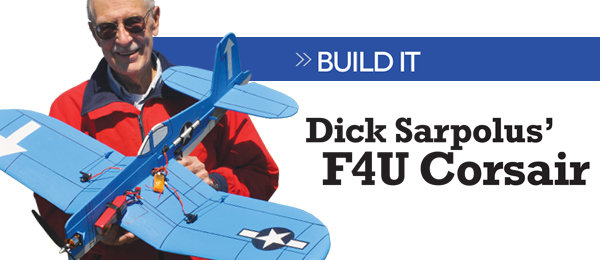Written by Don Slusarczyk
Jets
As seen in the Fall 2020 issue of Park Pilot
>> Most of the airplanes that I fly these days are made from foam. One large drawback of foam aircraft is that they easily get hangar rash. Dents, dings, and scratches seem to happen before the first flight even occurs. Small dents and dings are easily fixed with a little lightweight spackle, but sometimes that will not work if the damage is more extensive. Not too long ago, I had the opportunity to buy an E-flite F4 Phantom from a local modeler. It was in excellent condition, except for a chunk of foam missing from one wing where the wingtip and main wing panel met. The missing piece did not affect how it flew, but it was quite noticeable on the ground and needed to be repaired. The missing piece had a jagged breakoff line, so I used a fresh, single-edge razor blade and made a clean cut so that it would be easier to glue a new foam block into the damaged area. I had a sheet of 1-inch thick EPP foam available, so I cut a small piece off for this repair. EPP was not necessary; Depron could have easily been used on this repair, but I went with EPP because I had a thick enough sheet that required no lamination. EPP also glues together nicely with regular CA adhesive. Because this damaged section of the wing normally has a step in the LE (leading edge) outline, I took a small sheet of paper and traced the shape of the LE of the opposite wing before shaping the glued foam block. I then transferred that shape to the foam block to make sure that I did not remove foam in the wrong place while carving away the excess. I used a new razor blade to carve the foam so that the cuts would be easy to make and would not tear the foam. Using small cuts, I was able to cut and shape the foam to match the profile and airfoil of the LE in a few minutes. When doing this type of carving, try not to take off too much in one swipe. The process is more of a shaving away of the foam, similar to shaping balsa with a razor plane.


The jagged edge where the foam broke off should be cleanly cut away.

An oversize piece of EPP foam was glued to the wing’s LE.
After you get the foam shaped, you can touch it up with a little sandpaper. I like to use emery boards for this type of work on smaller areas, but sandpaper will work just as well. Depending on the type of foam you have used and how smooth the carving was, you might find that a light coat of spackle will help finalize any imperfections. I use generic lightweight spackle from a hardware store. Once satisfied with the finish, it is on to painting the repair. For small repairs, I like to use Model Master paints (testors.com) because I can tweak them slightly to match the shade of the paint on the model. I started with a shade as close as possible—in this case, Ghost Gray. I then added a little white or black to get a good color match. It is important to match the color when the paint has dried, so give it a few minutes before you make adjustments. When applied wet, the color is not the same as when it is dry. I use a small, plastic mixing cup with an airtight cap when fine-tuning the paint mixture because of the wait time to check the color. Another option for paint matching is to take the airplane or a part of it to a local paint store and have someone color-match the paint. I see lots of people posting online about doing this. When successful, you can get a sample of several ounces of color-matched latex for a few dollars.

A piece of paper was used to trace the LE profile onto the opposite wing.
I have tried this in the past and found that stores around my neighborhood were not too keen on putting an airplane part in their color analyzer. They instead pointed me toward the sample swatches and had me pick a color closest to it. The next time you dent, ding, or lose a piece of foam on your model, I hope you will give this type of repair a try. It is not that hard to do, and after a few successful repairs, you will have to point out the repaired spots to people because they won’t even know it was damaged in the first place!

Using the tracing of the opposite wing as a template, the foam block can be trimmed down to size.

A new single-edge razor blade was used to shave the foam away to match the airfoil.

The finished repair with matched paint is almost undetectable.
By Don Slusarczyk | [email protected]






